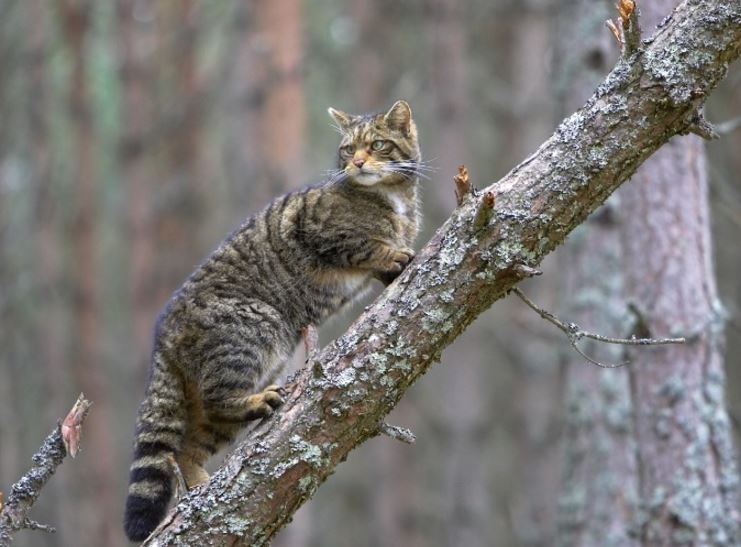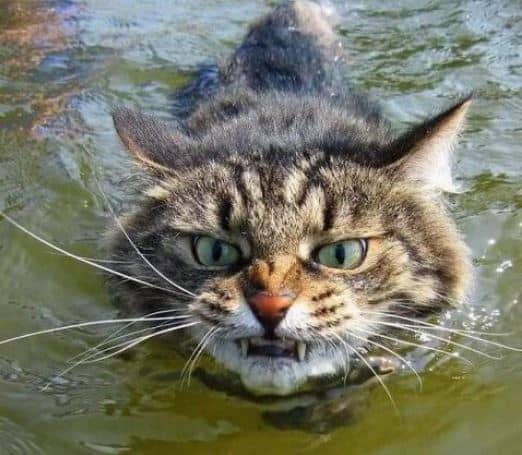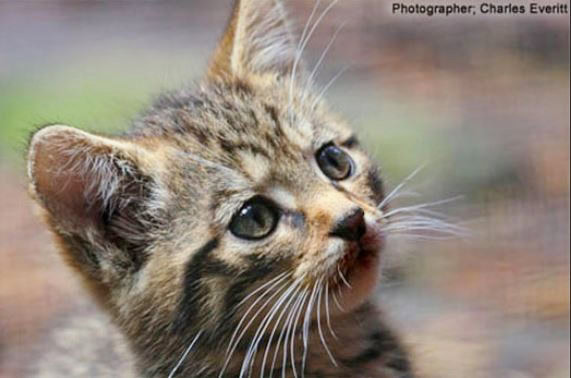A mega Scottish wildcat survey is underway as wildlife conservationists fight to save the animal from certain extinction in Scotland. According to Scottish Wildcat Action, it is the country’s largest-ever survey of Scottish wildcats.
The survey, which includes over 300 trail cameras live as from today, concentrates on five of the animal’s priority areas of Scotland – the Angus Glens, North Strathspey, Strathavon, Strathpeffer and Strathbogie. Later in the year, work will be continuing in Movern.
The cameras, which are motion-sensitive, will monitor wildcats living in areas of the Highlands over a period of sixty days. “Survey methods are informed by published scientific studies and a practical hands-on approach,” says Scottish Wildcat Action.
 The beautiful Scottish wildcat. This species is not a domestic cat that has gone wild – that is a feral cat. (Image: scottishwildcataction.org)
The beautiful Scottish wildcat. This species is not a domestic cat that has gone wild – that is a feral cat. (Image: scottishwildcataction.org)
Huge team of volunteers
The cameras will be checked by over three hundred volunteers. The data they gather will help on the decisions made regarding wildcat protection measures, including an extensive neutering campaign to stop pet and feral cats from interbreeding with wildcats, as well as passing diseases on to them.
Scottish Wildcat Action, a partnership project uniting experts from more than 20 key organisations, sends an enormous thank you to all the dedicated volunteers who have given up their time to help collect this crucial data.
This large volunteer collaboration is backed by an award from the Heritage Lottery Fund.
Minister for Environment, Climate Change and Land Reform, Dr Aileen McLeod, said:
“This project will carry out important work to protect the future of the wildcat in Scotland. I look forward to seeing the images from these camera trials and finding out more about these fascinating animals. “I would also like to thank all the volunteers involved in helping this project to take place and to cover so much wildcat territory.”
Priority Areas Manager, Roo Campbell, said:
“This is a significant step towards creating safer places for wildcats in Scotland. The winter survey will provide a huge source of information about what cats are out there, where they are and the degree of hybridisation between our native wildcat and the domestic cat.”
 When hunting aquatic prey, the wildcat waits on trees overhanging the water and jumps in when it sees something interesting. (Image: thewildcatclub.blogspot)
When hunting aquatic prey, the wildcat waits on trees overhanging the water and jumps in when it sees something interesting. (Image: thewildcatclub.blogspot)
“This is the first time a wildcat survey of this scale has been carried out and will be very important for assessing the current threats to wildcats.”
Interbreeding with domestic cats the major threat
The Scottish wildcat’s major threat is continued interbreeding with domestic cats. A large number of Scottish wildcats already have some domestic cat ancestry. If nothing is done, the domestic cat proportion of its DNA will rise, and the animal will continue to become less distinctive.
Scottish Wildcat Action is committed to reducing the incidence of interbreeding between domestic cats, obvious hybrids and wildcats. As soon as the project team has a better idea of the situation in the priority areas, it will be able to decide what follow-up actions to pursue.
 A Scottish wildcat kitten. Mothers have from 1 to 8 kittens per litter (mean 3.4). Gestation is from 63 to 68 days. Sexual maturity is reached at 10 to 12 months for females and 9 to 10 months for males. Wildcats probably live from 6 to 8 years in the wild and up to 15 years in captivity. (Image: scottishwildcats.co.uk. Credit: Charles Everitt)
A Scottish wildcat kitten. Mothers have from 1 to 8 kittens per litter (mean 3.4). Gestation is from 63 to 68 days. Sexual maturity is reached at 10 to 12 months for females and 9 to 10 months for males. Wildcats probably live from 6 to 8 years in the wild and up to 15 years in captivity. (Image: scottishwildcats.co.uk. Credit: Charles Everitt)
Scottish Wildcat Action wrote:
“This includes working with local communities and estates to protect our remaining wildcats and gearing up for a co-ordinated Trap Neuter Vaccinate and Release programme next summer.”
“Unowned domestic cats and obvious hybrids will be trapped, neutered and vaccinated before being returned to the wild under licence from Scottish Natural Heritage.”
The wildcat
The wildcat (Felis silvestris) is not a domestic cat that has gone wild or a domestic cat that never had contact with humans – that is a feral cat. The wildcat is its own species. It is a small cat native to most of Europe, Africa, and much of Asia.
 A wildcat filmed by one of Scottish Wildcat Action’s motion-sensitive cameras. (Image: scottishwildcataction.org)
A wildcat filmed by one of Scottish Wildcat Action’s motion-sensitive cameras. (Image: scottishwildcataction.org)
The IUCN Red List has assessed the wildcat as Least Concern (no risk of extinction) since 2002, because of its wide range. ‘Least Concern’ refers to its global status, not its status in Scotland, where it is endangered.
However, crossbreeding of wildcats with domestic or feral cats is considered a potential threat for the preservation of the wild species, especially in Europe.
The European wildcat has long fur, a bushy tail with a rounded tip, and is striped. It is larger than a domestic cat. The Asiatic wildcat is spotted, while the African wildcat is faintly striped.
Wildcats’ primary prey are small rodents, followed by birds, hares and insectivores. Unlike domestic cats, wildcats can ingest large fragments of bone without ill-effect.
Video – Identifying a pure Scottish wildcat
Identifying a Scottish wildcat can be complex because of hybridisation with feral domestic cats.

